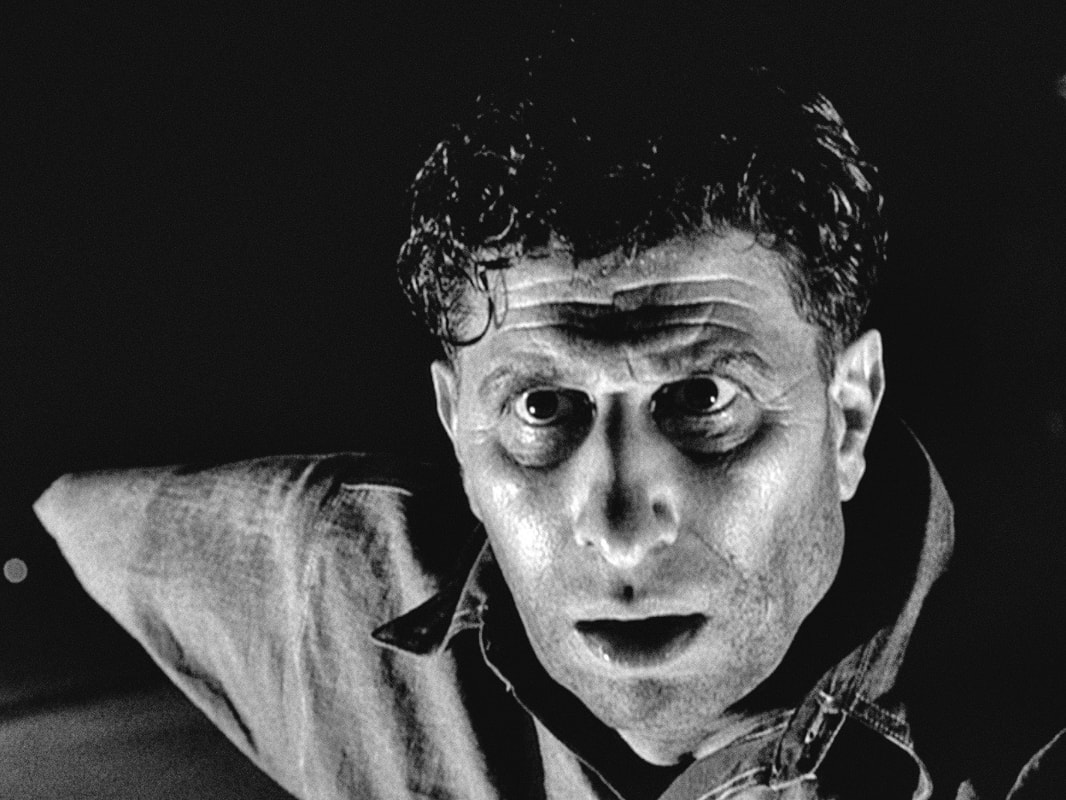TV Noir |
NEO NOIR
|
The Fugitive |
ABC 1963 – 1967
|
|
“I am escaped with the skin of my teeth.”
✦ BOOK OF JOB |
|
|
In The Fugitive, the trials of Job are put to the service of an enduring noir archetype: the man on the run. Our fugitive is Richard Kimble, a doctor sentenced to die for murdering his wife. That Kimble (David Janssen) is innocent is of little consequence to the system that has condemned him. Indeed, it has sent one of its fiercest agents, a police lieutenant named Philip Gerard (Barry Morse), to make sure he meets his appointment with the executioner. And this is how Kimble is introduced: shackled to a scowling lawman and star- ing glumly out a train window. “Richard Kimble ponders his fate as he looks at the world for the last time and sees only darkness,” the Narrator, voiced without sentiment by William Conrad, intones. “But in that darkness, fate moves its huge hand.” With an ungodly screech, the train derails, and the future, for Kimble, is again turned inside out. Amid the chaos, he manages a miraculous es- cape; falsified identification papers and a bottle of hair dye become his tokens through the noir world.
Though Kimble has skirted death, his fate remains questionable. Without sanctuary, he roams the country, rootless and haunted. Like Job, who “shall return no more to his house, neither shall his place know him any more,” Kimble is a tragic yet resilient figure, his stamina for loneliness and stigmatization repeatedly tested as he is run through the mill by a force beyond his control. As created by Roy Huggins and overseen by producer Quinn Martin, The Fugitive operates as an anthologized collection of morality plays: with each installment, Kimble is deposited in a new locale, where he’s forced to exercise his integrity and fortitude to resolve a crisis. But the overriding conceit is that of the noir thriller. When not evading the law, Kimble is driven by a need for vindication: on the night of his wife’s murder, he witnessed a one-armed man fleeing his house. If he can find this elusive figure, he can free himself from his predicament. To finance his travels, Kimble takes on all sorts of no-questions-asked jobs: custodian, lifeguard, dishwasher, chauffeur, delivery man, fish hatchery worker, merry-go-round operator, sail mender, bartender, lettuce picker, veterinary assistant, and so forth. Kimble’s ever-evolving identity, his various aliases and made-up backstories, ensure his survival. Were he to reveal himself, he’d be back on the train to death row. even the simplest of interactions bears the threat of danger: the people he meets as he hops from town to town are, by and large, an anxious, conflicted, trouble-brewing bunch. Kimble is always having to work through someone else’s conflicts or extricate himself from them, all the while keeping himself off the radar before someone with a badge finds out who he really is. Gerard, though he only appears in about one-third of the episodes, casts a long shadow. He’s the embodiment of the dark currents that continue to shape Kimble’s existence. The most fascinating aspect of Morse’s portrayal (aside from his unusually expressive eyebrows) is that he manages to turn this methodical bureaucrat into a transcendent presence. His ability to anticipate Kimble’s every move is uncanny. Yet the way in which Gerard figures in Kimble’s narrative represents an inversion of heroic values. Prior to The Fugitive, the police, the Fridays and the Ballingers, were lunchbox heroes, figures of authority whose upholding of the law reflected the solid foundation of American justice. The Fugitive, in making its protagonist the victim of judicial miscarriage, turns the tidy moral code of black-and-white television on its head. Kimble, the supposed malefactor, is the hero, while Gerard, the instrument of the law, is the villain. Of the hardboiled noir writers, David Goodis was perhaps the most adept at delineating, in spare, haunting prose, the cruel nightscape in which the man on the run finds himself, as in this passage from Nightfall (1947):
|
Promotional still for The Fugitive (1963) with David Janssen.
The Girl from Little Egypt (1963).
The series begins in media res, with Kimble already on the run, before rewinding back, in episode 14, to depict the nature of his plight: the stone-faced jury who refused to believe his account of the one-armed man fleeing the scene of his wife’s murder. On the set of Fear In a Desert City (The Fugitive, 1963).
Promotional Artwork for The Fugitive (Iran, 1963).
|
Abridged from TV NOIR by Allen Glover. Published by Abrams Press. All rights reserved.





